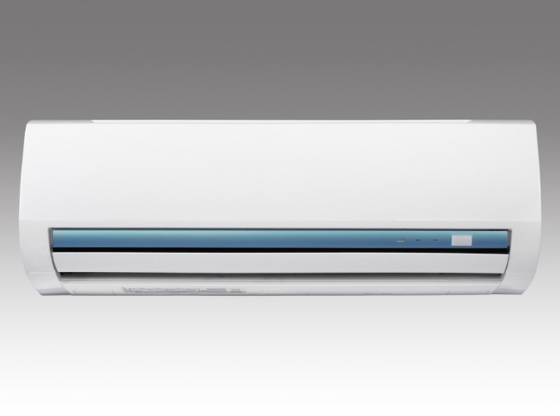Disability insurance benefits are an essential safety net for individuals who cannot work due to injury or illness. These benefits provide financial support, ensuring that the affected person can maintain their standard of living even in the face of unexpected challenges. As more individuals become aware of the potential risks they face, understanding the ins and outs of disability insurance policies becomes a vital aspect of financial planning.
There are several types of disability insurance benefits available, each catering to different needs and circumstances. Short-term policies typically provide coverage from a few weeks up to a year, while long-term policies offer benefits that can last until retirement age. A policy’s specific terms and conditions will vary but generally include factors such as elimination periods, benefit amounts, and definitions of disability. Evaluating these aspects can help people determine the best fit for their unique situation.
It’s important to note that not all disability insurance benefits are created equal. Some policies offer more comprehensive coverage, while others may be more restrictive in their definitions and benefit provisions. By thoroughly reviewing the options available, individuals can make informed decisions about their financial protection and secure peace of mind if they cannot work.
Types of Disability Insurance
Disability insurance is a crucial safety net for workers who become injured or ill and cannot maintain regular employment. There are two main types of disability insurance: short-term disability insurance and long-term disability insurance. Each type has its unique features and benefits.
Short-Term Disability Insurance
Short-term disability insurance covers a limited period, usually three to six months, depending on the policy. This type of insurance is designed to replace a portion of the worker’s income during the initial stages of their disability. It typically covers between 50% to 70% of their usual paycheck.
Short-term disability insurance policies may have varying waiting periods before benefits are paid out, typically from zero to 14 days. The shorter the waiting period, the higher the premium may be. Common examples of situations where short-term disability coverage could be helpful include recovering from surgery or treatment for a short-term, non-life-threatening illness or injury.
Long-Term Disability Insurance
Long-term disability insurance covers workers for an extended period, usually providing benefits for two years, five years or until retirement age, depending on the policy. This type of coverage is designed for individuals who experience long-term disabilities, chronic illnesses or severe injuries that prevent them from working for an extensive period.
Long-term disability insurance generally covers a more significant percentage of the worker’s income, up to 60% to 80% of their pre-disability earnings. These policies may also have longer waiting periods before benefits begin, ranging from 30 days to 180 days. Additionally, long-term disability policies often have a stricter definition of disability, requiring that the individual cannot perform any occupation for which they are qualified by education, training or experience.
In conclusion, both short-term and long-term disability insurance options are essential tools for workers to protect their financial stability in the event of a disability or health crisis. The choice of coverage depends on individual needs, career path, and financial situation.
Eligibility and Coverage
When it comes to disability insurance benefits, understanding eligibility requirements and coverage specifics is essential. This section delves into several critical aspects, including the definition of disability, work-related and non-work-related injuries, and age and income requirements.
Definition of Disability
Disability, in the context of insurance benefits, is defined as a physical or mental impairment that significantly limits an individual’s ability to perform a substantial gainful activity (SGA). This condition must either be expected to last for at least 12 months or be terminal, ultimately resulting in the individual’s death. The Social Security Administration (SSA) evaluates the severity of the impairment and the inability to work based on their guidelines.
Work-Related Injuries
Work-related injuries are those that occur in the course of employment or are directly tied to one’s occupation. For such injuries, workers’ compensation typically provides coverage. This may include wage replacement benefits, medical expense coverage, and vocational rehabilitation services. In the case of work-related injuries, the employee must report the injury to their employer promptly, following the established protocols for workers’ compensation claims.
Non-Work Related Injuries and Illnesses
Disability insurance benefits may cover injuries or illnesses arising from non-work-related activities. However, coverage depends on the specific policy the individual or employer purchases. Short-term and long-term disability policies generally offer varying degrees of income replacement, usually ranging from 60% to 80% of the individual’s pre-disability income. Most policies include a waiting or elimination period before the benefits begin, and the length of coverage will depend on the policy’s terms.
- Short-term disability insurance: covers temporary disabilities, typically up to 3-6 months.
- Long-term disability insurance: can provide benefits for several years, or even up to retirement age, depending on the policy.
Age and Income Requirements
Eligibility for disability benefits is also dependent on age and income. The Social Security Disability Insurance (SSDI) program is available to individuals with a specific number of work credits earned through paying Social Security taxes on their income. Generally, younger individuals require fewer work credits, while older individuals need more credits to qualify.
| Age | Work Credits Needed |
| Under 24 | 6 credits in the last 3 years |
| 24-31 | Credits for half of the years between age 21 and the onset of the disability |
| 31-42 | 20 credits |
| 43 and older | Credits increase incrementally by age |
Supplemental Security Income (SSI), a separate program, assists individuals with low income and limited resources who are disabled, blind, or elderly. SSI’s income and resource limits vary based on factors such as marital status and living arrangements. It is important to note that qualifying for one program does not guarantee eligibility for the other.
Social Security Disability Programs
The Social Security Administration (SSA) offers two main disability programs to eligible individuals who have a qualifying disability: Social Security Disability Insurance (SSDI) and Supplemental Security Income (SSI).
Social Security Disability Insurance (SSDI)
SSDI benefits disabled workers and their families if they have paid into the Social Security system through taxes. To be eligible, the individual must meet the SSA’s definition of disability and have a sufficient work history.
Applicants for SSDI must go through a rigorous application process that involves submitting extensive medical and work history documentation. If an initial application is denied, applicants can appeal the decision through a series of hearings and reviews.
Benefits are calculated based on the worker’s average indexed monthly earnings and can be received alongside other benefits, such as Medicare, after a 24-month waiting period.
Supplemental Security Income (SSI)
SSI, unlike SSDI, is a needs-based program and provides benefits to individuals with disabilities who have limited income and resources. The eligibility requirements for SSI include meeting the SSA’s criteria for disability, along with strict income and asset limits.
The application process for SSI involves filling out a detailed application form and providing relevant documentation on income, assets, and disability status. Like SSDI, denied applicants can appeal the decision through hearings and reviews.
SSI benefits are funded by general tax revenues, not Social Security taxes, and are set at a federal rate with some states providing additional supplements. Recipients of SSI are also eligible for Medicaid in most states.
Applying for Benefits
When seeking disability insurance benefits, it is essential to understand the application process, waiting periods, elimination periods, and your options for appealing decisions.
Application Process
The application process for disability insurance benefits usually involves gathering essential documentation and submitting it to the relevant authority, such as the Social Security Administration (SSA). Some of the necessary documents include:
- Medical records and doctors’ statements
- Personal identification and Social Security information
- Employment history and income details
It is important to provide accurate, detailed information to support your claim for disability benefits.
Waiting Periods and Elimination Periods
After applying, there may be a waiting period before receiving benefits. The waiting period varies depending on the policy or program. For Social Security Disability Insurance (SSDI), the standard waiting period is five months from the onset of the disability. Private long-term disability insurance policies may have different waiting periods, called elimination periods, generally ranging from 30 to 90 days.
Appealing a Decision
If your application for disability insurance benefits is denied, you might have the right to appeal the decision. Typically, there are several levels of appeals available:
- Reconsideration: A reconsideration of your claim with new or updated documentation
- Hearing: An administrative hearing with an administrative law judge
- Appeals Council: A review by the SSA’s Appeals Council
- Federal Court: If necessary, a final appeal in the federal court
Understanding the steps involved in each level of appeal can help you navigate the process effectively.
Employer-Sponsored Coverage
Employer-sponsored coverage is the most common form of disability insurance, as it provides workers with security and helps employers retain quality employees. This type of insurance can be offered through group plans or portable benefits. Each type has its advantages and specific aspects to consider.
Group Plans
Employers offer group disability insurance plans as a benefit for their workers, allowing them to pool the risk and obtain better coverage at more affordable rates. These plans often cover a pre-determined percentage of an employee’s income in the event of a disability.
One significant benefit of group plans is the cost efficiency for both employers and employees. Employers can negotiate better rates due to the larger group size, while employees often receive coverage without having to pay any premiums or only a portion thereof. However, it is essential to carefully review the plan’s coverage and any exclusions or limitations, as individual needs may vary.
It is also worth noting that group plans may have a waiting period before coverage begins, and the duration of benefits can vary. This information should be carefully reviewed and considered.
Portable Benefits
Portable benefits are another form of employer-sponsored disability insurance coverage. Unlike group plans, these benefits allow employees to maintain their coverage even when changing jobs or becoming self-employed. This is a crucial advantage for workers in today’s dynamic labor market, where job changes are more frequent.
Portable benefits typically require the employee to contribute to the premium cost, but the coverage continues uninterrupted even after leaving the employer. This gives the workers more flexibility and continuity should they need disability insurance benefits during their career transition.
However, portable plans may have higher premium costs compared to group plans, and the employees may need to undergo medical underwriting. Additionally, it’s crucial to compare the coverage details, as some plans might have different features or levels of protection.
Benefits and Family Members
Disability insurance benefits provide financial support to the insured individual and extend to some family members. This section will discuss spousal benefits, benefits for children, and benefits for former spouses.
Spousal Benefits
Spouses of disabled individuals may be eligible for benefits if they meet certain criteria. These benefits typically depend on the spouse’s age, whether they’re caring for a child under 16, and the length of the marriage.
Eligibility requirements for spousal benefits may vary depending on the specific insurance policy or government program. However, it is important to note that not all policies or programs provide spousal benefits. Additionally, the benefit amount for spouses is usually calculated as a percentage of the disabled individual’s benefit amount.
Benefits for Children
Children of disabled persons can also be eligible for benefits under certain circumstances. Eligible children typically include biological children, adopted children, and some stepchildren. To qualify, the child must be under the age of 18, or aged 18-19 and still attending secondary school.
Benefits for children depend on the specific policy or program and are calculated as a percentage of the disabled parent’s benefit amount. In some cases, there may be a maximum limit on the overall amount that can be received by a family, which could impact individual benefits for each child.
Benefits for Former Spouses
Former spouses of disabled individuals may also be entitled to benefits, depending on their divorce or separation circumstances. To be eligible, the former spouse must meet certain age and length-of-marriage requirements, and the disabled individual must be insured.
As with spousal and children’s benefits, the benefits for former spouses may vary depending on the specific policy or government program. The benefit amount for a former spouse is typically based on a percentage of the disabled individual’s benefit. Both parties must review their respective policies or programs to understand their eligibility and potential benefits.
State Disability Insurance Programs
State disability insurance programs provide short-term financial assistance to eligible workers who experience a loss of wages due to a non-work-related illness, injury, or pregnancy. The programs vary across states, with benefits available in California, Hawaii, New Jersey, New York, and Rhode Island. Each state administers its program through its respective state agency, with specific requirements and benefits tailored to its workforce.
California
The California State Disability Insurance (SDI) program is administered by the Employment Development Department (EDD). The program covers most workers in the private sector, including self-employed individuals who opt-in. Benefits are calculated based on the claimant’s highest-earning quarter during the base period, lasting up to 52 weeks.
Hawaii
The Disability Compensation Division of the Department of Labor and Industrial Relations manages Hawaii’s Temporary Disability Insurance (TDI) program. The program covers all private sector employees, with benefits calculated based on the claimant’s average weekly wages. Employees can receive benefits for up to 26 weeks within a benefit year.
New Jersey
The New Jersey Temporary Disability Insurance (TDI) program is administered by the state’s Department of Labor and Workforce Development. Most private sector employees and some public employees are covered. Benefits are based on the claimant’s average weekly wage, and eligible workers can receive benefits for up to 26 weeks within 52 weeks.
New York
The Workers’ Compensation Board manages New York’s Disability Benefits Law (DBL) program. The program covers most private sector employees, with benefits lasting up to 26 weeks for a consecutive 52-week period. Benefits are based on the claimant’s average weekly wage, with payments capped at a maximum amount set by the state.
Rhode Island
The Department of Labor and Training administers the Rhode Island Temporary Disability Insurance (TDI) program. Most employees in the private sector are covered, including some public employees. Benefits are based on a percentage of the claimant’s average weekly wage and can be received for up to 30 weeks within a benefit year.
Voluntary Benefits and Premiums
Disability insurance benefits can be obtained through different sources, with one common form being voluntary benefits. Employers often provide these voluntary benefits as an additional coverage option to employees.
Voluntary Disability Insurance
Voluntary disability insurance, often offered by employers as a supplementary option to their employees, provides a financial safety net for individuals who become disabled and lose the ability to work. These policies are typically available for both short-term and long-term disabilities.
Employees can decide whether to enroll in these policies or not, allowing them to tailor their coverage based on personal needs and preferences. Voluntary policies can also offer additional benefits, such as potential portability, should an employee decide to switch jobs or leave the workforce.
Cost of Premiums
The cost of premiums for voluntary disability insurance depends on a variety of factors, including an individual’s age, income, and selected coverage options. In general, premiums will be a percentage of the employee’s income, often ranging from 1% to 3%.
- Age: Older employees may face higher premium costs, as the likelihood of becoming disabled increases with age.
- Income: Premiums will be a percentage of an employee’s income. Higher-income earners may see higher premium costs, as they have a larger potential benefit to protect.
- Coverage Options: Selecting different coverage options or additional riders can impact premium costs. For example, choosing a shorter waiting period or adding an inflation rider might increase the premium.
While voluntary disability insurance can provide valuable financial protection for employees facing a disability, the cost of premiums and individual needs should be carefully considered during the decision-making process.
Disability Insurance and Taxes
Understanding the tax implications of disability insurance benefits is crucial for recipients. This section will provide a brief insight into the taxation of disability insurance benefits.
Disability insurance benefits can be mainly categorized into two types: employer-provided and individually-purchased policies. The tax treatment of these benefits depends on the type of policy, how the premiums are paid, and whether the benefits are short-term or long-term.
In general, if an employer pays the entire premium for a disability insurance policy, then the benefits received by the employee are taxable as ordinary income. However, if the employee pays the premiums with after-tax dollars, the benefits received would be tax-free. A popular option is for the employer and employee to split the premium cost; in this case, the taxable portion of the benefits received would be proportionate to the employer’s contribution towards the premium.
For individually purchased disability insurance policies, the benefits are usually tax-free, as the premiums are paid with after-tax dollars. Nonetheless, it’s essential to check with a tax professional as individual circumstances can vary.
Short-term disability benefits are treated differently than long-term disability benefits regarding taxation. Generally, short-term disability benefits are subject to federal, state, and Social Security taxes, while long-term disability benefits might be exempt from Social Security taxes depending on the policy terms.
- Employer-Provided Policies:
- Benefits are taxable if the employer pays the entire premium
- Benefits are tax-free if the employee pays the premium with after-tax dollars
- Split premium cost results in a proportionate taxable portion
- Individually-Purchased Policies:
- Benefits are usually tax-free
- Short-Term vs. Long-Term Disability:
- Short-term benefits are subject to federal, state, and Social Security taxes
- Long-term benefits may be exempt from Social Security taxes
It is advised to consult with a tax professional to determine the specific tax implications of your disability insurance benefits, as individual circumstances may vary.
FAQs
Determining the right disability insurance benefits can be a daunting task. To help in the decision-making process, here are some frequently asked questions:
- What is the difference between short-term and long-term disability insurance?
- Short-term disability insurance covers a temporary leave from work due to illness, injury, or pregnancy, while long-term disability insurance provides benefits for an extended period when an individual is unable to work.
- Is disability insurance the same as workers’ compensation?
- Workers’ compensation is designed explicitly for work-related injuries and illnesses, while disability insurance covers conditions that can occur both in and out of the workplace.
- How does one qualify for benefits?
- To qualify for disability benefits, an individual must meet the policy’s definition of disability. This usually involves proving an inability to perform the tasks associated with their occupation due to a medical condition.
- How long is the waiting period before benefits are paid?
| Type of Insurance | Typical Waiting Period |
| Short-term Disability | 7 to 14 days |
| Long-term Disability | 30 to 90 days |
- What percentage of income is typically replaced by disability insurance?
- Most disability policies replace 60% to 70% of pre-disability income. This range can vary based on the policy and an individual’s specific needs.
Knowing these FAQs can help individuals make more informed decisions when selecting the right disability insurance coverage to suit their needs.











